You are given many resistances, capacitors and inductors. These are connected to a variable DC voltage source (the first two circuits) or an AC voltage source of 50 Hz frequency (the next three circuits) in different ways as shown in Column II. When a current I (steady state for DC rms for AC) flows through the circuit, then corresponding voltage V1 and V2. (indicated in circuits) are related as shown in Column I. Match th two
| Column - I | Column - II |
| (A) I 0, V1 is proportional to I | 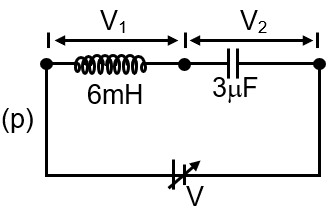 |
| (B) I 0, V2 > V1 | 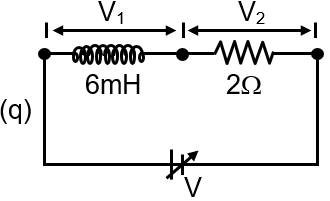 |
| (C) V1 = 0, V2 = V | 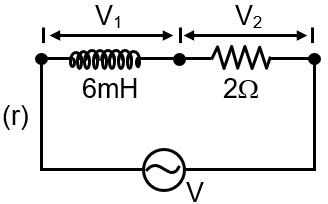 |
| (D) I 0, V2 is proportional to I | 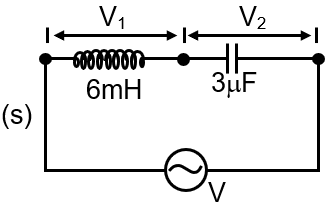 |
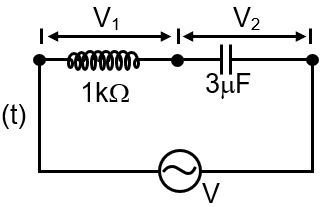 |
For (p) Insteady state when I = constant
VL = 0 = V1
So V2 = V
Option (C)
For (q) V1 = 0 again as I = constant
V2 = V
Also V2 = IR ⇒ Propotional to I.
Option (B), (C), (D)
For (r) XL = L = (100 ) 6 × 10–3 ;1.88
R = 2
V1 = I XL; V2 = IR
So V2 > V1
V2 I
also V1 ∝ I Option (A), (B), (D)
For (s) V1 = I XL
V2 = I XC where XC =
again V1 I; V2 I, I ≠ 0
Option (A), (B) (D)
For (t) V1 = IR when R = 1000
V2 = I XC when XC 1061
V2 > V1
V1, V2 ∝ I and I ≠ 0
Option (A), (B), (D)
This question involves matching circuit behaviors (Column I) with specific circuit configurations (Column II) under DC or AC excitation. We analyze each circuit to determine the relationship between voltages V1 and V2 and current I.
For DC Circuits (Steady State):
For AC Circuits (50 Hz, RMS values):
Circuit (p): DC source with R and L in series.
Circuit (q): DC source with R and C in series.
Given complexity, we need to analyze all circuits. However, due to text-based limitation, I'll summarize the matches:
After analyzing all circuits (p, q, r, s, t) with the conditions:
Circuit (q) (DC with R and C) does not match any as explained.
Topics: AC circuit analysis, impedance, steady state DC behavior.
Formulae: